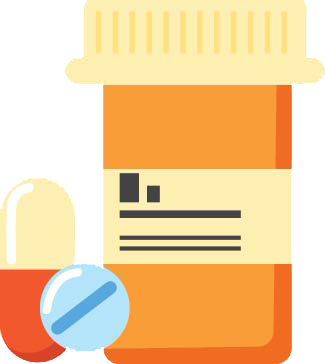
Your Prescription Medicine: Tips for Safe Storage and Disposal
Where do you keep your prescription medicine?
How and where you keep your medication can make a big difference when it comes to medication safety. Every year, two million people end up in the hospital due to drug-related injuries. This might include medication errors, adverse drug reactions, allergic reactions, or overdoses.1
Safe and secure storage of your prescription medicine can help avoid accidental injuries.
How can I store my prescription medicine safely?
• First, get organized. Check to see if any of your prescription medicines are expired, since taking expired medication may no longer be safe or effective. Make sure your prescription medicine is stored in the original packaging with the safety lock tightened and secured.• Second, secure your medicine. Keep your medicine in a place out of the reach of children and pets. Also, further secure any prescription narcotics like morphine, opioids, or codeine in a locked cabinet or drawer. Safe storage of these controlled medications is especially important, as they can be dangerous if taken when not prescribed.
How can I dispose of my prescription medicine safely?2
You should dispose of any unused or expired prescription medicine as soon as possible. Timely disposal of prescription medicine can reduce the risk of others taking the medication accidentally or misusing the medication intentionally.
The best and most environmentally friendly way to dispose of your prescription medicine is through a drug take-back program. The U.S. Drug Enforcement Administration (DEA) periodically provides drug disposal sites in communities across the nation. The DEA also has permanent drug disposal sites in certain pharmacies or hospitals.

Get more information about drug disposal at https://takebackday.dea.gov or locate a disposal site near you with the DEA Location Search tool .
What if there are no drug disposal sites in my area?
If there are no disposal sites in your area, there are ways to safely dispose of your medication at home.
• First, read the packaging label on your medication. Controlled substances and other medicines can be harmful if ingested by others, so the label might have special disposal instructions that you should follow.• If there are no special disposal instructions, you can safely dispose of your medication in your household trash by following these four steps:
- Mix your medicine with an inedible substance like dirt, cat litter, or used coffee grounds.
- Put the mixture in a container, such as a sealed plastic bag.
- Throw the container in your household trash.
- Scratch out all the personal information on the prescription label of your empty medication bottle to make it unreadable. Then dispose or recycle the empty medication bottle.
Learn more about prescription drug disposal
Food and Drug Administration (FDA) – Safe Disposal of Medicines
FDA – Where and How to Dispose of Unused Medications
1Source: Office of Disease Prevention and Health Promotion (ODPHP) Adverse Drug Events at https://health.gov/hcq/ade.asp
2Source: FDA Disposal of Unused Medications: What You Should Know at https://www.fda.gov/Drugs/ResourcesForYou/Consumers/
BuyingUsingMedicineSafely/EnsuringSafeUseofMedicine/SafeDisposalofMedicines/ucm186187.htm
